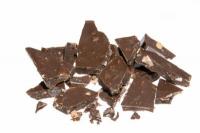The calculation scheme in accounting in the industry - explanation and example
Would you like to determine the quotation price for a planned order? The calculation scheme for surcharge calculation in the industry is suitable for the preparation of offers or post-calculation for single or series production. The accounting department supplies the overhead rates for the overhead costs.
The surcharge calculation in accounting
- The surcharge calculation is suitable for series or individual production. There is a separation into individual and overhead costs.
- In accounting, direct costs are, for example, wages or material costs. They are assigned directly to a product or an order, since they are exclusively caused by this cost unit.
- Special direct costs for production or sales are not incurred for all products and are directly attributable to an order. This could be patent costs or special transport insurance.
- The overhead costs that are not directly attributable are taken into account via surcharge rates. These result from the overhead costs incurred in a comparable period. The accounting department supplies the data for this.
- The calculation scheme described here is suitable as a basis for a preliminary calculation if you want to submit an offer to a customer. The scheme can and must always be adapted to the individual circumstances of the respective order.
- You can also use this calculation scheme to carry out an interim or post calculation for control purposes up to the item "cost of goods sold".
The calculation surcharge allows a simplification of the price calculation in ...
The calculation scheme for the industry - an example
Assume that an order incurs direct material costs of € 5,600, wage costs € 3,500, € 120 special direct costs for production and € 50 special direct costs for sales. The overhead surcharge rates determined from the accounting data are 13% for material, 90% for production, 13% for administration and 5% for sales. A profit surcharge of 15% is planned. The customer account should be 3%, the agent commission 5% and the customer discount 10%.
- Calculate the material overhead as 13% of the direct material costs. You receive € 728, which you add to the direct material costs. The total material costs are therefore € 6,328.
- Use the given surcharge rate to calculate the production overheads from the wage costs. You will receive € 3,150. Add up the material costs, the wage costs, the production overheads and the special direct costs of production and you get the production costs of € 13,098.
- You calculate the administration and sales overhead costs using the given surcharge rates from the manufacturing costs. You will receive € 1,702.74 for administration overheads and € 654.90 for distribution overheads. Add up the manufacturing costs, the administrative and sales overhead costs and the special direct costs for sales. This results in the cost of € 15,505.64. If you do a recalculation, it ends here and you can determine the profit actually made.
- Add a 15% profit to the cost. This results in the cash sale price of € 17,831.49.
- You calculate the customer account and agent commission with the given rates of the cash sale price. However, you have to do the per-hundred calculation here. To calculate the customer account, multiply the cash sale price by 3 and divide this value by 97. You will receive a customer account of € 551.49 and an agent commission of € 938.50. By adding the cash sale price, customer account and agent commission, you get the target sale price of € 2,146.83.
- Calculate the customer discount in the hundred of the target sales price. In the example, the customer discount is € 2,146.83. If you add the target sales price to the customer discount, you get the net sales price of € 21,468.31.
- Finally, add the sales tax of 19% and the result is a gross sales price of € 25,547.28.


